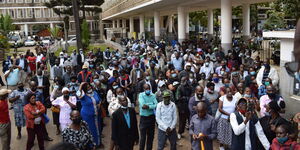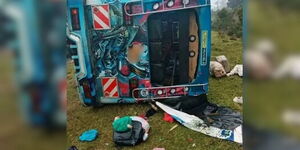At least 18 people have been rushed to hospital after a suspected Anthrax outbreak at Emitiot Village in Sotik, Bomet County, on Sunday, February 2.
The outbreak, as first published by the Daily Nation stated that the patients exhibited signs linked to the rare but dangerous anthrax bacteria.
Initial reports revealed that the individuals suspected to have contracted the bacteria came into contact with carcasses of four cows that are suspected to have died of the disease in Sotik.
“The villagers were brought to the hospital in the morning and are currently undergoing treatment and observation," one of the doctors at the Kapkatet hospital disclosed.
County disaster management officer Stanley Mutai, confirmed the suspected outbreak but was quick to point out that there were no reports of anyone consuming the meat from the cows suspected to have died from anthrax.
“The victims who slaughtered the carcass and buried it, have developed blisters on various parts of their bodies as a result. So far, there is no report of anyone having feasted on the carcass,” he announced.
The director of veterinary at the Bomet County government, Dr. Wilson Serem, while addressing the media, revealed that samples of the carcass had been extracted and taken for laboratory tests.
“The specimen has been taken to Regional Veterinary Investigations Laboratory in Kericho County and the results are expected within the next 24 hours. It will confirm whether the suspected case is that of anthrax or not,” the doctor announced.
“Vaccination of animals in the area will be carried out as a precautionary measure as the said cases of infection had not been reported to the veterinary department when the animals died,” he added.
Anthrax is a rare but serious illness caused by a spore-forming bacterium- bacillus anthracis, mainly affecting livestock and wild game. However, humans are known to be capable of contracting the killer disease through direct or indirect contact with sick animals.












